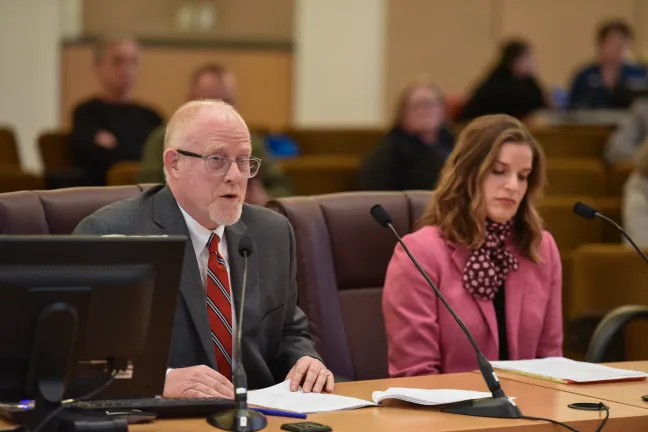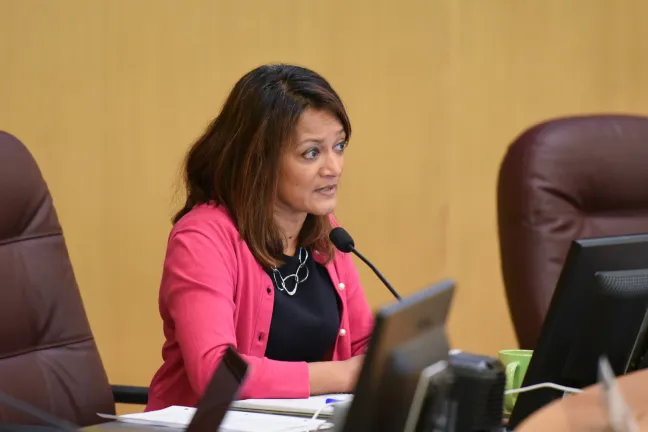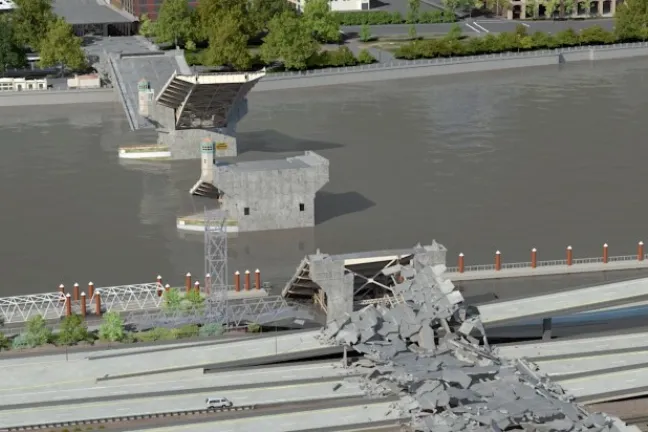Multnomah County’s Board of Commissioners approved a key part of the funding plan for the Earthquake Ready Burnside Bridge project on December 5 by voting to increase the county’s vehicle registration fee in 2021 to help fund the project’s design and construction phases. The vote follows a November 14 Board meeting where commissioners held a first vote to approve the fee increase and recommended options to evaluate to make the bridge survive a major earthquake.
“This is the time to do this project, before disaster has hit,” said County Chair Deborah Kafoury. “It will only get more expensive if we wait until after the earthquake. We will move this project forward in the Multnomah County way, with lots of community involvement, making sure the community is along with us.”
The Board voted to increase the county’s current vehicle fee of $19 per year per vehicle to $56 per year per vehicle. Fee revenue can only be spent on the county’s Willamette River bridges in Portland. The increased fee revenue will be focused on the Burnside Bridge project.
Several Board members expressed concern that the fee increase not burden low-income vehicle owners. “I am really concerned about the impact on low-income fee payers. I’m glad we are committed to finding a low-income option before the fee increase goes into effect,” said Commissioner Susheela Jayapal.
Transportation Division Director Ian Cannon told the Board that none of the existing Willamette River bridges in downtown Portland are expected to be usable for weeks or months after a major earthquake. The downtown bridges were built before the region’s risk of major earthquakes was known. The last time Oregon experienced a major earthquake along the Cascadia Subduction Zone was in 1700, almost 320 years ago: that is longer than 75% of the other spans between major quakes in the zone in the last 10,000 years, increasing the risk that a major quake will happen in the near future.
In testimony to the Board, Portland Deputy Fire and Rescue Chief Don Russ noted that newer bridges in Portland, such as the Tilikum Crossing and Sellwood Bridge were not sufficient to serve the community after a major earthquake. “The approaches to the Tillikum Bridge were not constructed to seismic standards,” he said. “The location of the Sellwood Bridge is at the southern end of the City’s jurisdiction and will require lengthy travel times for emergency responders to one remote location. This situation could potentially delay critical care response which could result in an increase in casualties.
Deputy Chief Russ noted that “the Burnside Bridge is centrally located between all five address quadrants in the City of Portland and provides direct access to more critical Emergency Response Routes than any of the bridges crossing the Willamette River.”
Transportation Director Ian Cannon said the Burnside Bridge is the only County bridge that is on an Emergency Response Route, making it the best county bridge to focus on.
The fee increase will help keep the project on schedule so that the county can manage preparing for the earthquake, rather than react to it after it happens, said Jay Wilson, a Portland resident who works as an emergency manager for Clackamas County. “Don’t wait until after the earthquake to replace the structure. If you do, you will lose this asset when you need it most, and you’ll pay a higher cost to replace it.”
Jillian Detweiler is director of The Street Trust, a Portland non-profit that advocates for bicyclists, pedestrians and transit users. She testified in support of the fee increase to help all types of bridge users (not just drivers) get home after an earthquake. This project also creates a “tremendous opportunity to improve the experience for people crossing the river by bike, by foot and on public transportation,” she said. “We expect those users will be a driving force during the design process for this project.”
Portland resident Terry Parker testified that vehicle owners should not be singled out to fund the project. He advocated for new taxes on transit users and bicyclists so that “any fee should be assessed to all members of the community across the region, no matter how they travel.”
Transportation Director Ian Cannon said that revenue from the fee increase will allow the county to bond $270 million to help fund the project. The project has a cost range between $580 million and $860 million, depending on which alternative is selected.
Alternatives Selected for Study
At their November 14 meeting, County Commissioners approved three build alternatives that will be studied before the Board recommends a Preferred Alternative in 2020. The recommended alternatives are:
Seismic retrofit of the existing bridge (currently the lowest cost option)
A replacement bridge with a drawbridge on the same alignment as the existing bridge.
A replacement bridge with a drawbridge on the same alignment as existing bridge, with an extension of NE Couch Street on the westbound approach. The extension would replace the sharp curves on the existing approach to accommodate longer vehicles.
The Board accepted a recommendation to drop a fixed bridge alternative (with no drawbridge), due to the high height that would be required to accommodate the tallest river vessels that pass under the bridge.
The Board also approved the evaluation criteria that will be used to compare the alternatives and the cross sections (or widths) of the alternatives. The Board also recommended that the project team study the option of a temporary detour bridge during construction as well as a traffic plan without a temporary bridge.
A round of extensive public outreach will be held in summer 2020 before the board recommends a preferred alternative. The preferred alternative will need to be approved by the Federal Highway Administration before work can proceed on design and construction.



